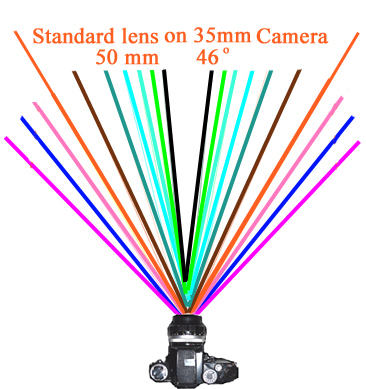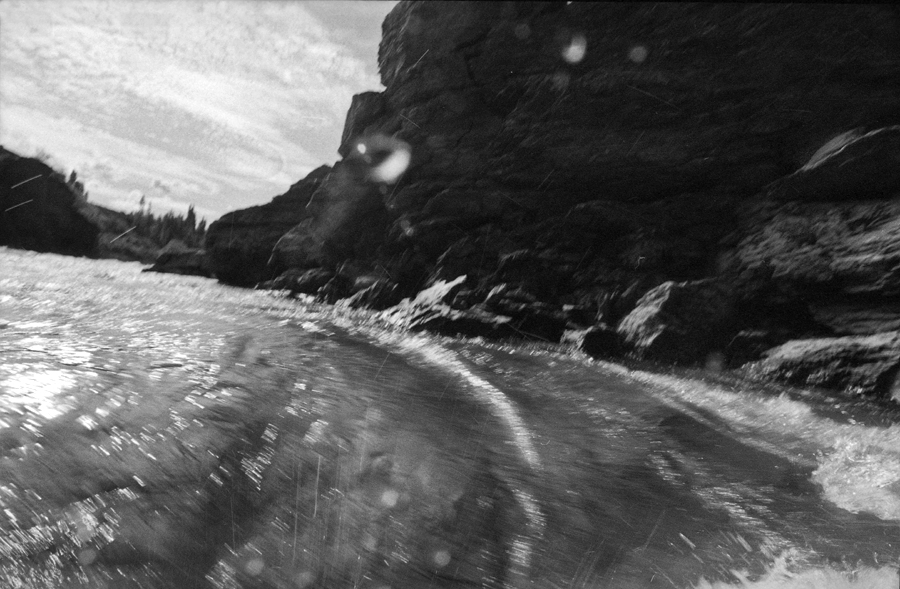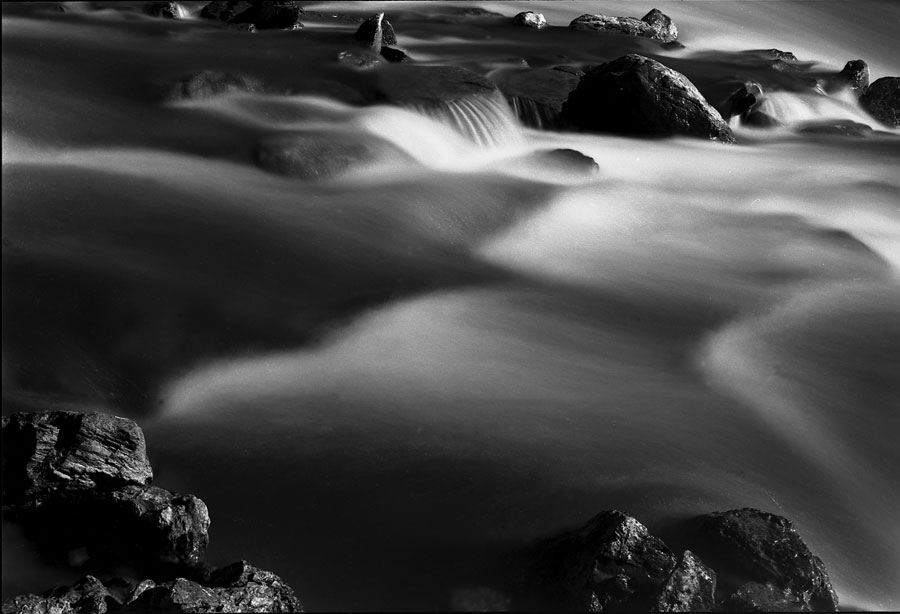Sequence viewing > Index - Cameras - lenses - optics - Resource - ©
Lloyd Godman
Film - Digital
Angle
of view is perhaps an easier way of understanding focal
length of a lens. This angle is formed by imaginary lines
from the Centre of the lens - by locating the diagonally opposite
corners of the film format, or CCD sensor used and
projecting outwards to the diagonally opposite corners of the
scene projected onto the recording medium. While the angle of
view is hypothetical - it gives an relative indication how much
of the scene will be included for each focal length lens. This
angle becomes smaller as the focal length increases ( telephoto
lens) and larger as the focal length decreases (wide angle lens).
|
With a
35 mm camera:
| Focal
Length |
Angle
of View |
| 50
mm standard lens |
46degrees |
| 20
mm wide angle |
94
degrees |
| 28
mm wide angle |
74
degrees |
| 35mm
wide angle |
62
degrees |
| 85
mm small telephoto |
28
degrees 30' |
| 135
mm small telephoto |
18
degrees |
| 300
mm medium telephoto |
12degrees
20' |
| 500
mm telephoto |
5
degrees |
| 600
mm telephoto |
4
Degrees 10' |
| 800
mm large telephoto |
3
degrees |
|

Move over
image to see roll over
|
In
practical terms we simply look through the lens and relate the
scene in the viewfinder - if we have a zoom lens we zoom from
one focal length to the next and the angle of view changes with
this.
The angle of view is linked to perspective, as we alter the angle the perpetive alters, which means that the scale relaionship of objects within the scene alter.

|
For this image of the Last
River Song project I used am 20mm
- wide angle lens on a 35mm film camera. This had aan angle of view of 94
degrees.
This allowed me to
include small objects like drops of water in the foreground while
relating them the the wider environment. Because the sid angle
lens covers a wider area you don't need to hold the camera quite
as still. When used with a small aperture it also allowed a great
depth of field with little camera shake. With this example - notice
how using a wide angle lens eventuates the perspective - the camera viewpoint looking down the river augments this also.
|
 |
However
with this image from the Last
Rivers Song, I used a 135mm lens on a 135mm camera. This had an angle of view of 18
degrees.
Because
the film I was using was very slow - 3 ISO - this required a tripod
to hold the camera steady. With this example the camera is positioned
looking across the river to a small section in the centre.
See Shutter speed
|
Want to learn more? - do a workshop or one on one with Lloyd Godman
|